Thinking about plunging into the world of night vision? It’s a fascinating realm, opening up a perspective previously reserved for nocturnal animals and спецоперации. But let’s be honest, seeing in the dark comes with a price tag that can be as daunting as the darkness itself. The crucial question isn’t just if night vision is worth it, but how to find the Best Night Vision Goggles For The Money.
 Author Through White Phosphorus Night Vision
Author Through White Phosphorus Night Vision
In this guide, we’ll navigate the landscape of night vision technology, breaking down the jargon and focusing on value. We’ll explore different types and generations of night vision, discuss essential gear to maximize your investment, share practical usage tips, and, most importantly, recommend some of the best night vision goggles that balance performance and price.
Whether you’re a hunter seeking an edge in low-light conditions, a competitive shooter looking to dominate night shooting matches, a security professional enhancing your surveillance capabilities, or simply an enthusiast fascinated by the technology, this guide is designed to illuminate your path.
Get ready for a deep dive into the world of night vision, complete with hands-on gear insights and visual examples.
Understanding Night Vision Generations: A Quick Breakdown
Before we jump into specific models, it’s crucial to understand the fundamental technology behind night vision goggles: image intensifier tubes. These tubes are the heart of NVGs, responsible for collecting and amplifying ambient light, allowing you to see in near-total darkness. Night vision technology has evolved significantly over the years, with each major advancement categorized into “generations.” Here’s a simplified overview:
- Generation 1 (Gen 1): The earliest form of night vision, dating back to the Vietnam War era. Gen 1 NVGs are characterized by their bulkiness and lower image quality compared to modern counterparts. While they might be the most budget-friendly entry point, their practical use today is limited due to distortion and lower light amplification.
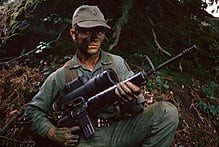 Gen 1 Night Vision
Gen 1 Night Vision
-
Generation 2 (Gen 2): A significant leap forward, Gen 2 technology, emerging in the 1980s, incorporates a microchannel plate (MCP) in the image intensifier tube. This innovation dramatically improves resolution and light amplification, offering a 150% improvement over Gen 1. Gen 2 NVGs are a viable option for users seeking a balance between performance and affordability, providing a usable night vision experience.
-
Generation 3 (Gen 3): Developed in the 1990s, Gen 3 night vision further refines the technology with the introduction of a gallium arsenide photocathode. This advancement results in a 30% increase in resolution compared to Gen 2, along with enhanced low-light performance and image clarity. Gen 3 is considered the sweet spot for many users, offering excellent performance and representing the most commonly recommended generation for a wide range of applications.
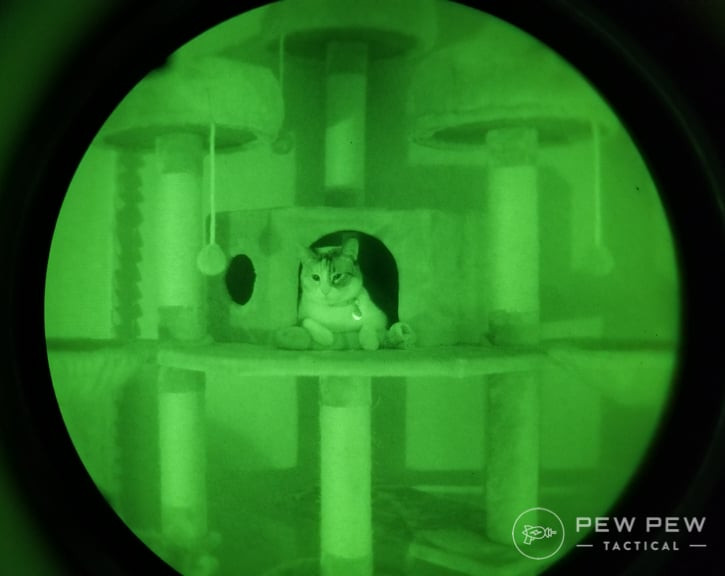 Night Vision Cat
Night Vision Cat
- Generation 4 (Gen 4): The pinnacle of current night vision technology, Gen 4 offers a marginal improvement (around 10%) over the best Gen 3 systems. Key enhancements include reduced halo effects around bright light sources and even better performance in extremely low-light conditions. However, this top-tier performance comes at a significantly higher cost. Gen 4 NVGs are typically reserved for professional users where absolute performance is paramount, regardless of price.
White Phosphor Night Vision: You might have noticed night vision often displays a green image. This is due to the phosphor coating on the image intensifier tube. White phosphor is a Gen 3 technology that presents a black and white image, often perceived as more natural and providing better contrast and depth perception, particularly in urban or mixed light environments. While offering visual advantages, white phosphor NVGs generally come with a premium price tag compared to their green phosphor counterparts.
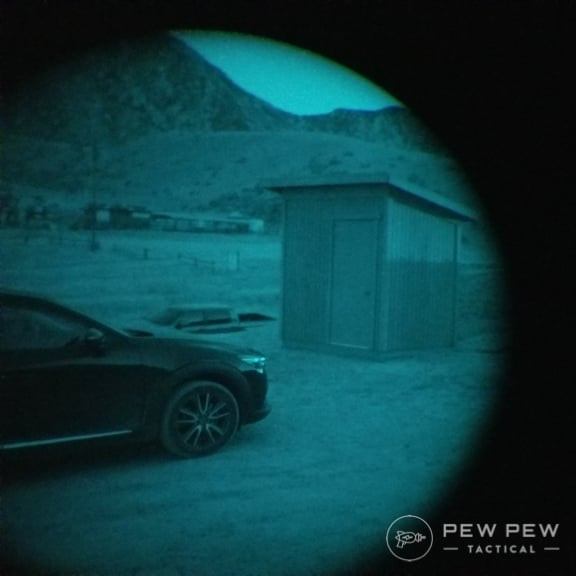 EOTech White Phosphor
EOTech White Phosphor
Monoculars vs. Binoculars: Choosing the Right Configuration for Your Needs
When considering night vision goggles, you’ll encounter two primary configurations: monoculars and binoculars. The choice between them depends largely on your intended use, budget, and personal preferences.
Binocular night vision goggles, with two eyepieces and image intensifier tubes, are what often comes to mind when picturing NVGs. Think of iconic imagery from movies like “Zero Dark Thirty” with quad-tube goggles.
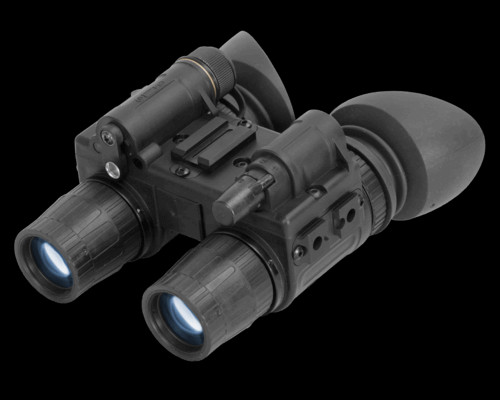 ATN PS15-3
ATN PS15-3
While quad-tube panoramic NVGs like the L3 GPNVG-18 offer an unparalleled 97-degree field of view, they represent the high end of the market, costing upwards of $40,000.
 L3 GPNVG-18
L3 GPNVG-18
For most first-time NVG users, especially those seeking the best night vision goggles for the money, monoculars are the more practical and budget-friendly starting point.
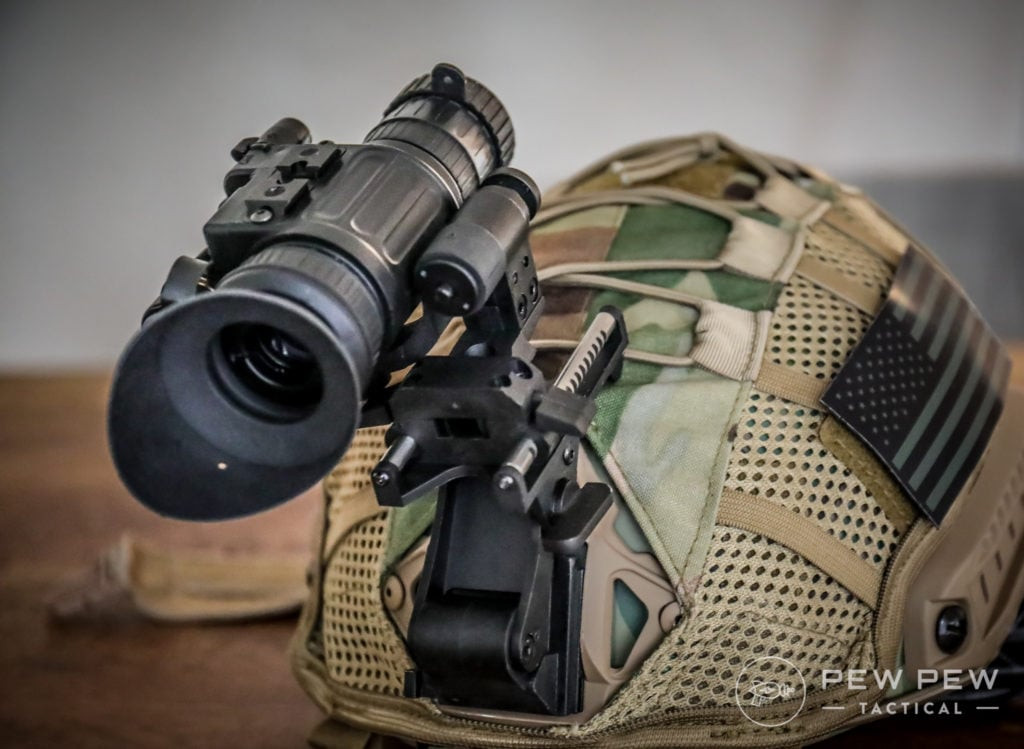 ATN NVM14-3 with Hard Head Veterans Helmet
ATN NVM14-3 with Hard Head Veterans Helmet
Monoculars offer several advantages:
- Cost-Effective: Monoculars are significantly less expensive than binoculars, often half the price for comparable generation technology. This makes them more accessible for individuals entering the night vision market.
- Versatility: Monoculars are highly versatile and can be used in various ways – handheld, helmet-mounted, or even weapon-mounted. This adaptability makes them suitable for diverse applications.
- Preserved Natural Night Vision: Using a monocular leaves one eye unaided, preserving your natural night vision in that eye. This can be beneficial for maintaining situational awareness and depth perception.
Both monoculars and binoculars typically offer a similar field of view, around 40 degrees. Therefore, the decision largely boils down to budget and intended use. If you’re prioritizing cost-effectiveness and versatility, a monocular is an excellent choice. If you desire a more immersive viewing experience and have a larger budget, binoculars might be worth considering.
Getting Started: How to Use Night Vision Goggles Effectively
Once you have your night vision goggles, understanding how to use them effectively is key to maximizing their potential. The initial experience can be a bit disorienting. Depth perception is altered, and there’s a learning curve to navigating in the dark with NVGs.
Practice is essential. Start by using your NVGs in a safe, controlled environment like your home or backyard. Focus on adjusting the diopter and objective lens to achieve a clear image at different distances. Walking around and performing simple tasks will help you adapt to the altered depth perception.
Monoculars offer a unique advantage in close-quarters tasks. Even when focused for distance viewing, your unaided eye can provide visual input for close-up manipulations, such as handling equipment or performing intricate tasks.
Essential Night Vision Gear: Beyond the Goggles
While the night vision goggles themselves are the core component, several supporting pieces of gear significantly enhance their functionality and usability, especially in tactical or outdoor scenarios.
Helmets and Mounting Systems
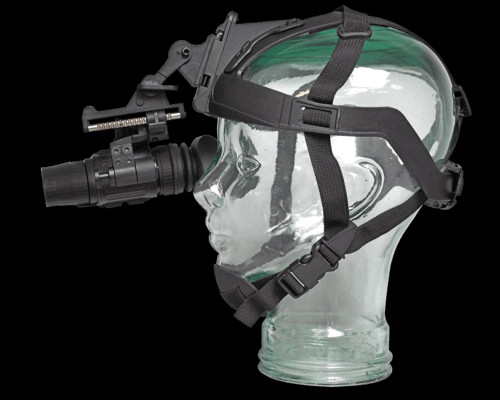 NVM14 Head Mount
NVM14 Head Mount
While basic NVG systems often come with a simple strap head mount, a helmet provides a much more stable and comfortable platform for mounting your goggles, especially for extended use or dynamic activities.
Helmets designed for NVG use come in ballistic and non-ballistic “bump” versions. Ballistic helmets offer protection against projectiles, while bump helmets prioritize impact protection and serve as a stable mounting platform. The crucial feature is a front shroud, compatible with NVG mounting arms.
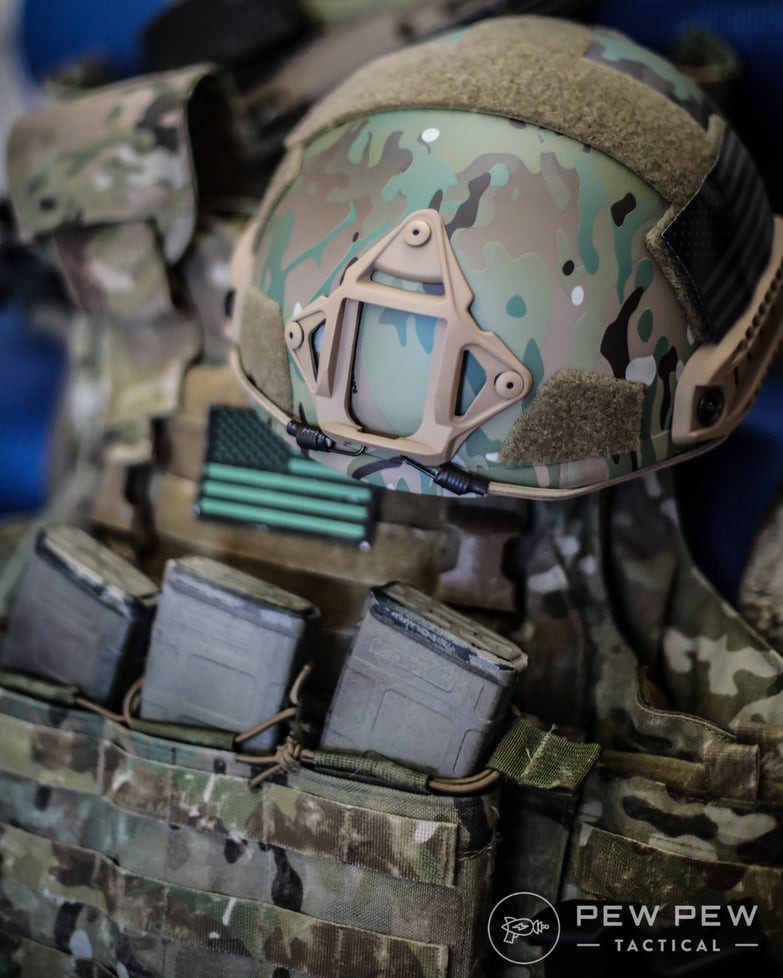 Ballistic Helmet with Shroud
Ballistic Helmet with Shroud
Mounting arms connect your NVGs to the helmet shroud. Options range from commercial systems to standardized military-spec mounts. A recommended upgrade is a breakaway mount, like the Wilcox Breakaway mount. This safety feature allows the NVG to detach from the helmet under excessive force, preventing potential neck injuries if the goggles snag on an object.
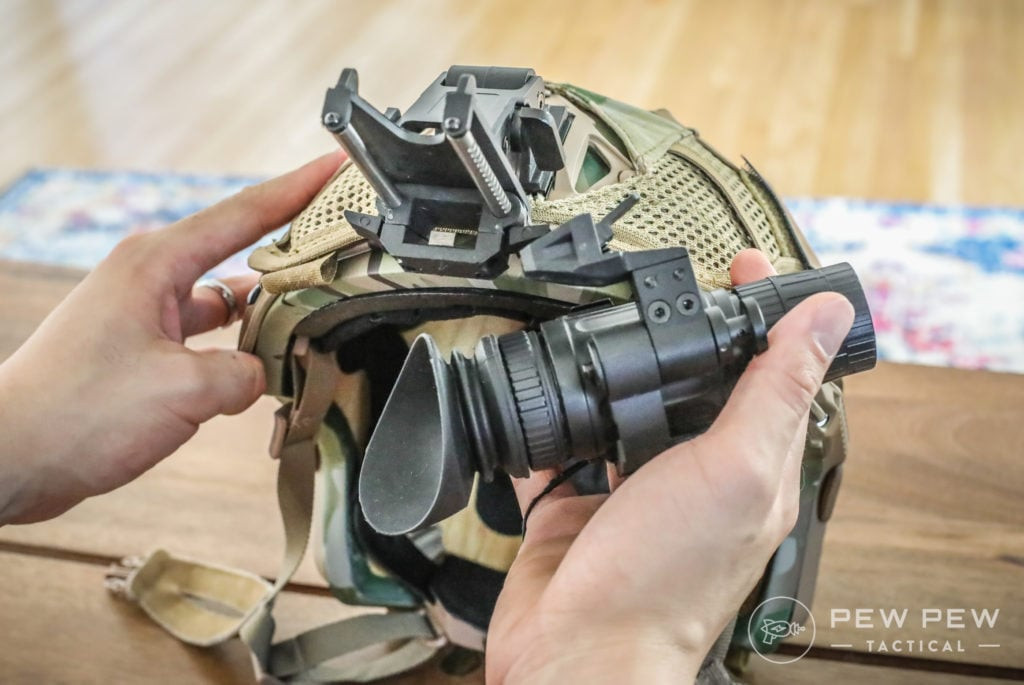 Attachment System of ATN NVM14-3
Attachment System of ATN NVM14-3
Properly adjusting the NVG’s position relative to your eyes is critical for comfortable and effective use. Most mounts offer adjustments for interpupillary distance, eye relief, and vertical positioning. Experiment to find the optimal settings for your vision. Typically, monoculars are mounted over the non-dominant eye or the eye opposite your shooting shoulder, keeping the dominant eye free for aiming with traditional optics in day/night transitions.
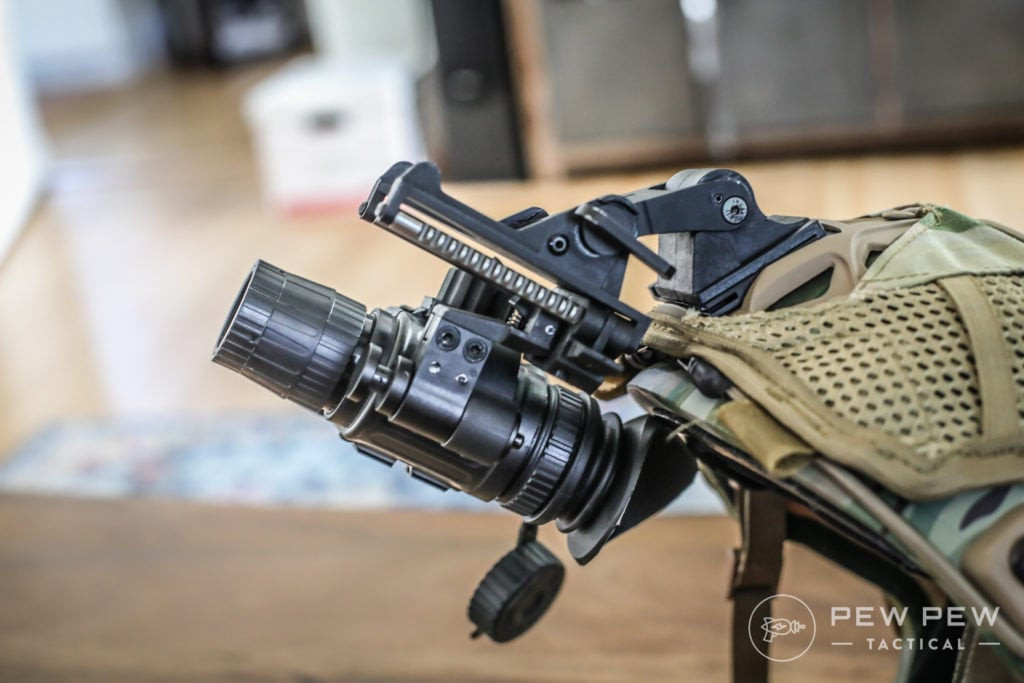 Adjusting NVM14-3
Adjusting NVM14-3
IR Illuminators
Night vision goggles amplify existing ambient light. But what happens when there’s virtually no ambient light, such as in a completely dark indoor space or under heavy cloud cover in a remote area? This is where Infrared (IR) illuminators become essential.
IR illuminators emit infrared light, which is invisible to the naked eye but readily detected by night vision goggles. Some NVG models have built-in short-range IR illuminators, useful for close-quarters illumination (around 10 feet). For longer distances, standalone IR illuminators are necessary.
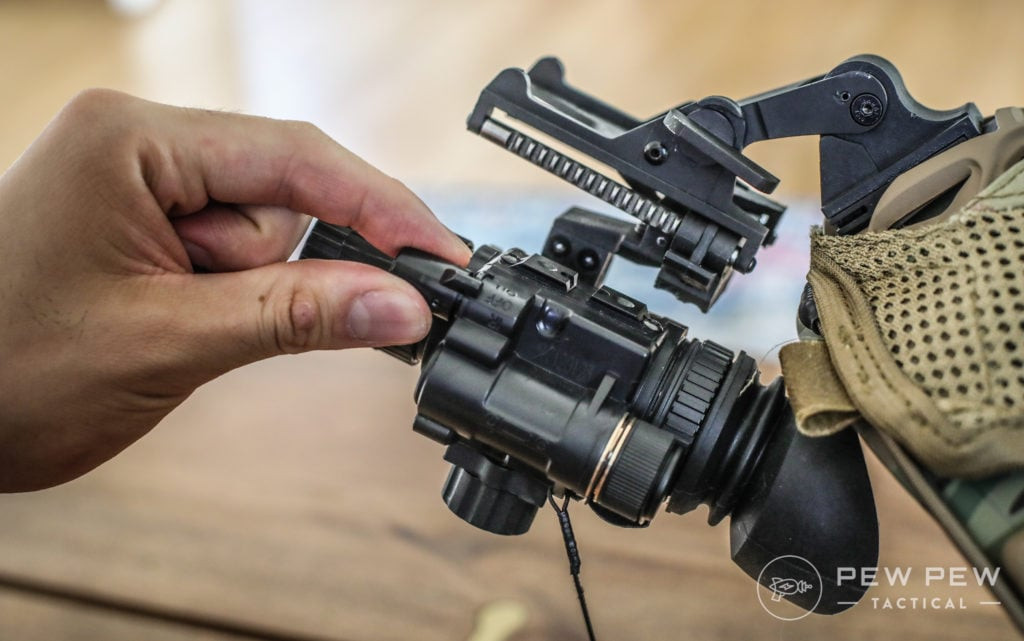 Switch for ATN NVM14-3
Switch for ATN NVM14-3
IR Lasers and Aiming Solutions
Aiming firearms while wearing night vision goggles presents a unique challenge. Traditional optical sights become difficult, if not impossible, to use effectively. While some optics offer night vision compatible settings, they still require aligning your eye behind the sight, which can be cumbersome with NVGs.
IR lasers provide a solution for aiming under night vision. These lasers emit infrared beams visible only through NVGs, allowing for rapid and intuitive point shooting. For optimal performance, consider combination units that integrate both an IR illuminator and an IR laser, such as the Steiner DBAL series.
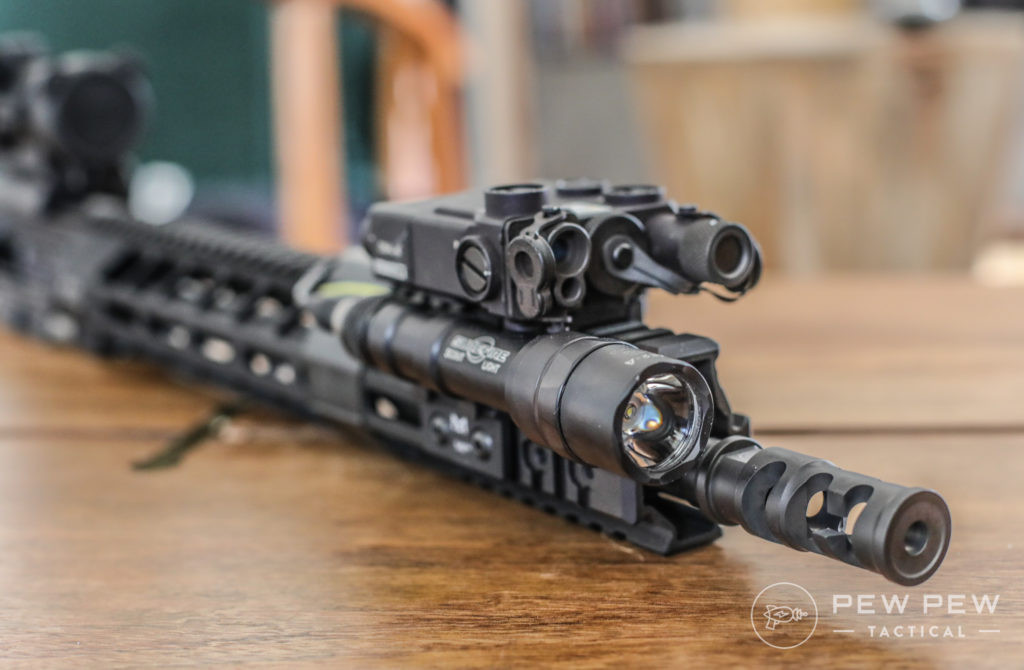 SureFire M600 Scout
SureFire M600 Scout
These units project both an IR laser for aiming and an adjustable IR illuminator for target identification and situational awareness.
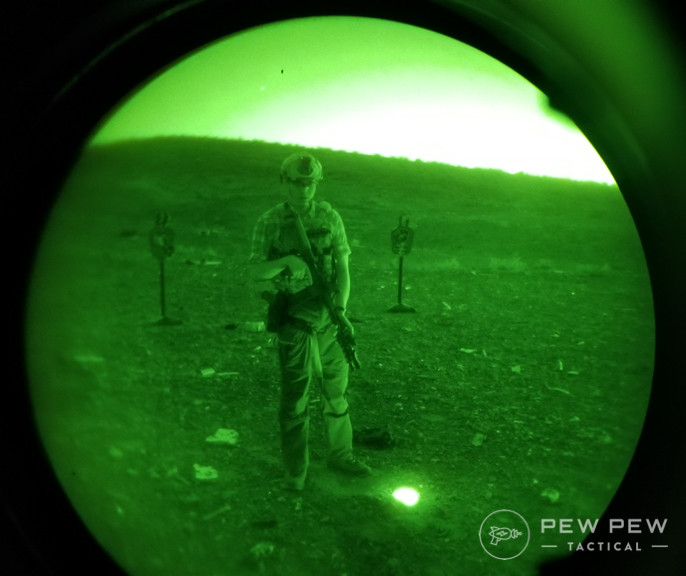 Steiner DBAL Illuminator
Steiner DBAL Illuminator
Counterweights
Mounting NVGs, especially with helmets and accessories, shifts weight forward, potentially causing neck strain and discomfort during extended use. Counterweights, mounted at the rear of the helmet, balance the load and improve comfort. These can be dedicated counterweight pouches filled with lead weights or battery packs for powering accessories.
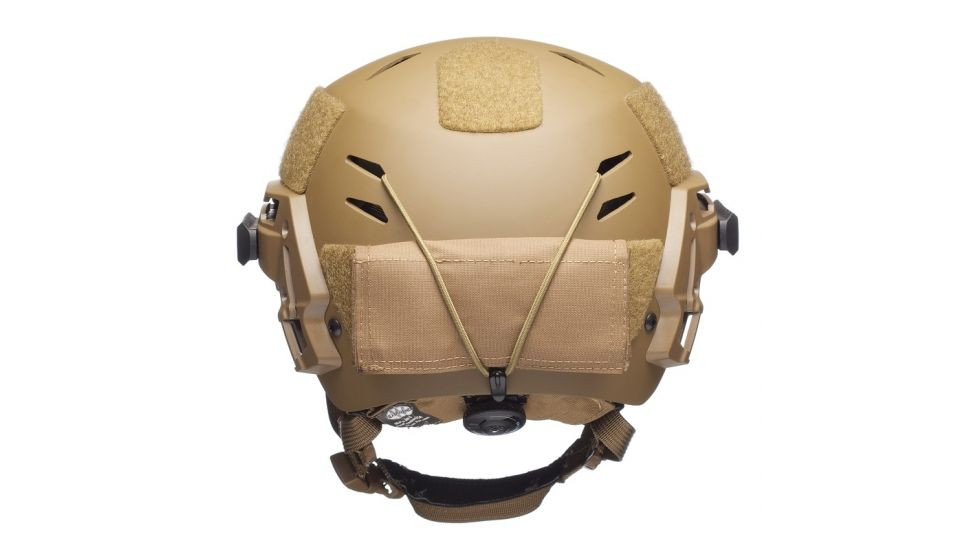 Team Wendy Counterweight
Team Wendy Counterweight
Top Picks: Best Night Vision Goggles for the Money
Now, let’s get to the core of the question: What are the best night vision goggles for the money? In the realm of NVGs, image quality and performance are directly linked to price. “Buy once, cry once” is a relevant adage, as upgrading later can be costly due to depreciation on used NVGs. Purchasing from reputable manufacturers or well-known retailers is crucial to ensure warranty support and avoid potential issues with less scrupulous sellers.
Here are some of our top recommendations, balancing performance and value across different price points:
1. ATN NVM14-3 (Best Overall Value Monocular)
The ATN NVM14-3 is a commercial variant of the military-spec PVS-14 monocular, manufactured by ATN, a leading name in both military and commercial night vision. This Gen 3 monocular offers excellent performance and durability at a competitive price point, making it our top pick for best overall value.
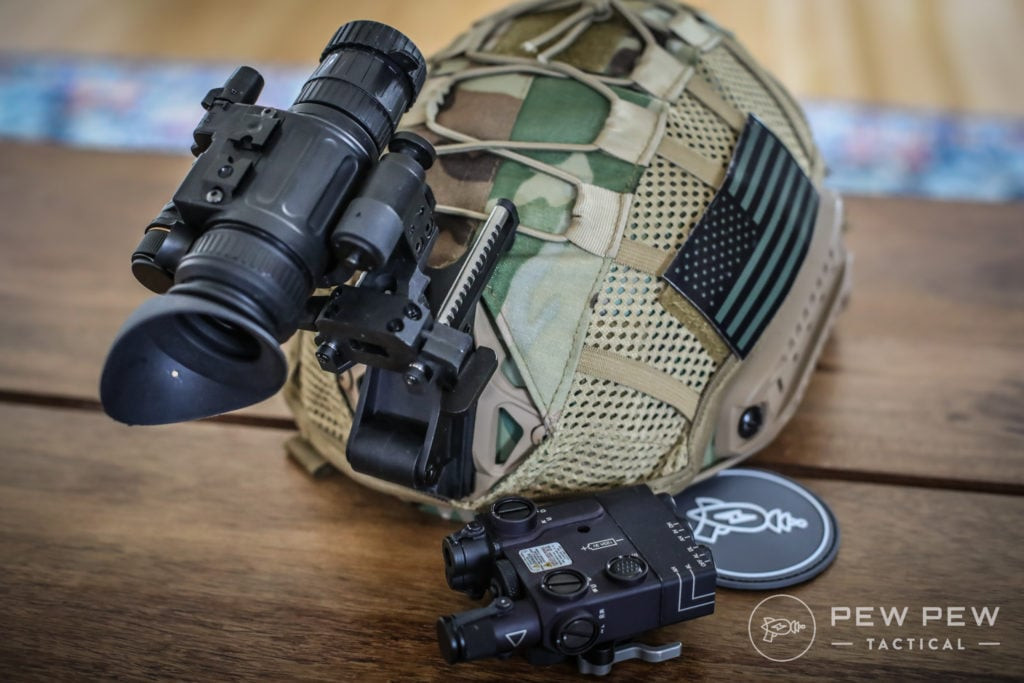 NVM14-3 with Steiner DBAL-A3
NVM14-3 with Steiner DBAL-A3
While the commercial version uses a proprietary mounting system, it provides robust performance suitable for most users. The Gen 3 tube delivers clear and bright images, significantly outperforming Gen 2 options and justifying the slightly higher investment for users serious about night vision.
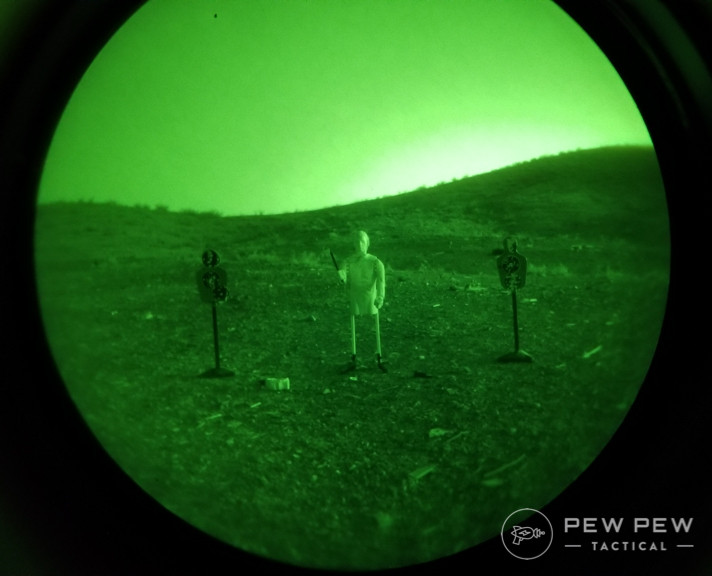 Targets at Night, ATN PVS14-3
Targets at Night, ATN PVS14-3
Pros:
- Excellent Gen 3 performance.
- Reputable manufacturer.
- Robust construction.
- Good value for money.
Cons:
- Proprietary mounting system.
Price: Around $3,000
Best for: Users seeking high-performance Gen 3 night vision in a versatile and relatively affordable monocular package.
2. ATN PVS14-3 (Mil-Spec Option)
For users requiring military-specification robustness and compatibility with standard military mounts, the ATN PVS14-3 (mil-spec version) is the direct equivalent of the US military’s standard issue PVS-14.
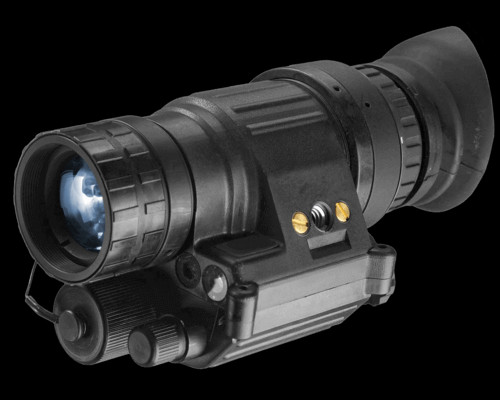 atn pvs 14 gen 3
atn pvs 14 gen 3
It offers the same Gen 3 performance as the NVM14-3 but is built to stricter military standards and utilizes a universal mounting interface. This makes it compatible with a wider range of helmet mounts and accessories.
Pros:
- Mil-Spec durability.
- Universal mounting system.
- Excellent Gen 3 performance.
Cons:
- Higher price than commercial NVM14-3.
Price: Around $3,500
Best for: Users who need mil-spec durability and compatibility with military mounting systems.
3. Armasight PVS14 Gen 3 (Competitive Alternative)
Armasight (now part of FLIR Systems) is another well-regarded manufacturer in the night vision market. Their PVS14 Gen 3 monocular is a strong competitor to the ATN models, often offering comparable performance and features.
 Armasight PVS14 Gen 3
Armasight PVS14 Gen 3
Historically, Armasight PVS14s were sometimes priced higher than ATN, but current market dynamics make them a very competitive option to consider, often found at similar or even slightly lower prices for Gen 3 configurations.
Pros:
- Reputable brand.
- Gen 3 performance.
- Often competitively priced.
Cons:
- May vary in price and availability compared to ATN.
Price: Around $4,000
Best for: Users seeking a reputable alternative to ATN PVS-14 monoculars with potentially competitive pricing.
4. ATN PS15-3 (Entry-Level Binocular NVG)
For users set on binocular night vision but operating within a tighter budget, the ATN PS15-3 offers an entry point into dual-tube NVGs. While still a significant investment, the PS15-3 is considerably more affordable than high-end binocular systems.
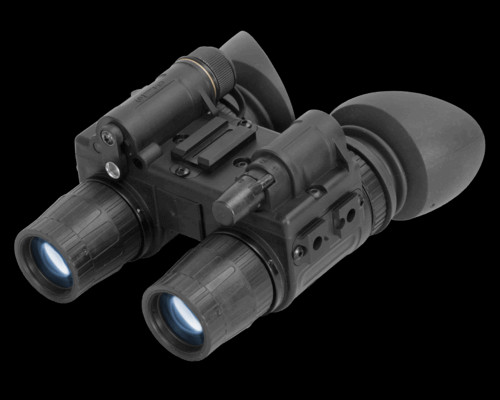 night-vision-goggles-ps15_photo
night-vision-goggles-ps15_photo
It features Gen 3 tubes and provides a binocular viewing experience, enhancing depth perception and immersion compared to monoculars. However, it’s important to note that “entry-level” in binocular NVGs still means a substantial financial commitment.
Pros:
- Binocular night vision.
- Gen 3 performance.
- More affordable than high-end binoculars.
Cons:
- Still expensive compared to monoculars.
- Heavier and bulkier than monoculars.
Price: Around $6,500
Best for: Users who prioritize binocular viewing and are willing to invest in a more budget-conscious dual-tube system.
5. L3 EOTech BNVD (White Phosphor Binoculars – Law Enforcement/Military)
For discerning users seeking the enhanced clarity and contrast of white phosphor technology in a binocular configuration, the L3 EOTech BNVD (Binocular Night Vision Device) is a top-tier option.
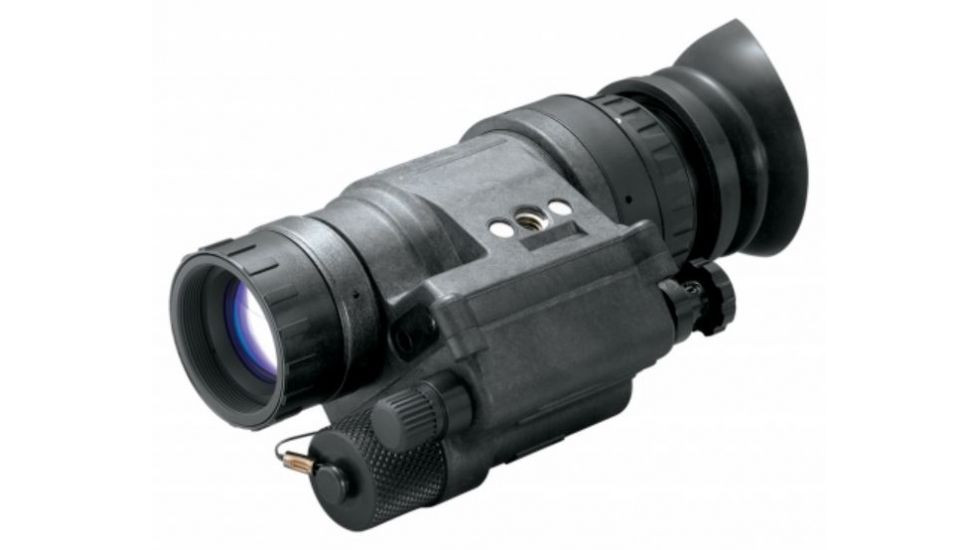 eotech-m914-omega-pvs-14
eotech-m914-omega-pvs-14
These binoculars utilize high-performance white phosphor tubes, delivering exceptional image quality and detail. While priced at a premium, the BNVD represents a significant step up in visual performance, particularly in urban and mixed-light environments. Typically restricted to law enforcement and military sales channels.
Pros:
- White phosphor technology.
- Exceptional image clarity.
- Binocular viewing.
Cons:
- High price.
- Limited availability (LE/Military).
Price: Around $5,700
Best for: Law enforcement, military professionals, or civilian users with specialized needs and budget for top-tier white phosphor binocular performance.
6. L3 EOTech GPNVG (Panoramic Quad-Tube – Operators Only)
At the apex of night vision technology lies the L3 EOTech GPNVG (Ground Panoramic Night Vision Goggle). These quad-tube goggles provide an unprecedented 97-degree panoramic field of view, dramatically expanding situational awareness.
 Nice-GPNVG-969×1024
Nice-GPNVG-969×1024
The GPNVG represents the ultimate in night vision capability but comes with an ultra-high price tag, comparable to a new car. These are specialized tools for elite military and law enforcement units where maximum situational awareness is critical.
Pros:
- Unmatched 97-degree panoramic field of view.
- Quad-tube technology.
- Ultimate situational awareness.
Cons:
- Extremely high price.
- Specialized application.
Price: Around $42,500
Best for: Elite military and law enforcement operators requiring the absolute maximum in situational awareness and field of view, regardless of cost.
Choosing the Best Night Vision Goggles for Your Money
Selecting the “best” night vision goggles ultimately depends on your specific needs, intended use, and budget. Consider these key factors when making your decision:
- Generation: Gen 3 offers the best balance of performance and value for most users. Gen 2 is a more budget-friendly entry point, while Gen 4 is for those demanding top-tier performance regardless of price.
- Monocular vs. Binocular: Monoculars are more versatile and affordable, ideal for beginners and general use. Binoculars offer a more immersive experience but come at a higher cost.
- White Phosphor vs. Green Phosphor: White phosphor provides potentially better contrast and detail, especially in urban environments, but typically costs more.
- Budget: Night vision is a significant investment. Determine your budget upfront and prioritize features and performance within that range.
- Intended Use: Consider how you will primarily use your NVGs. Hunting, tactical applications, security, or general observation will influence your feature priorities.
Conclusion: Embracing the Night
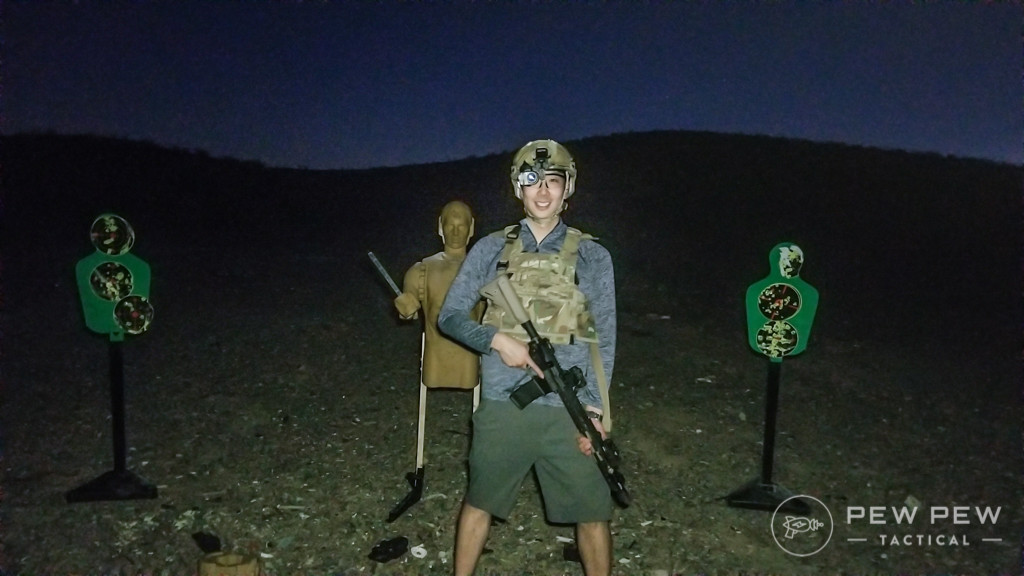 Author All Geared Up with Carrier and NVG
Author All Geared Up with Carrier and NVG
Night vision technology opens up a new dimension of seeing and operating in low-light environments. While the initial investment can be substantial, understanding the technology, generations, and key gear components is crucial to making an informed decision and finding the best night vision goggles for your money. Start with a clear understanding of your needs and budget, and explore the options within your reach. The ability to own the night is an empowering capability, and with the right NVGs, you can step into a world previously unseen.
